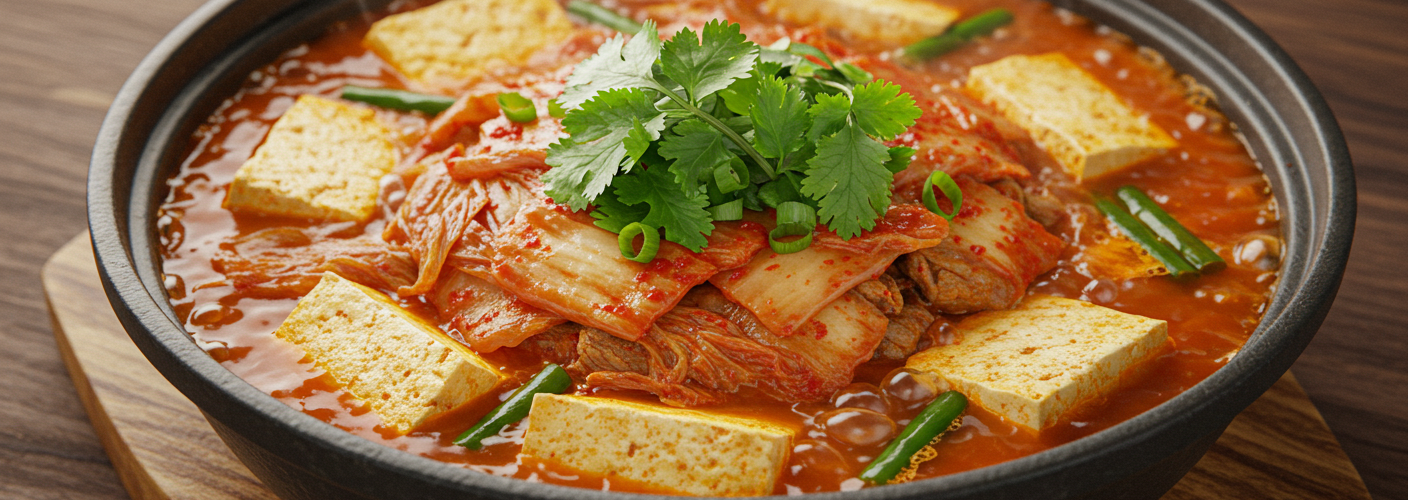When it comes to comfort food, few dishes can compete with the heartwarming and flavorful Kimchi Jjigae. This iconic Korean stew, a staple in households across the country, not only boasts a rich history but also brings warmth and satisfaction to cold winter nights and rainy days. Whether enjoyed as a quick lunch or a cozy dinner, Kimchi Jjigae offers a perfect blend of spice, umami, and texture that is hard to resist.
Understanding Kimchi Jjigae
At its core, Kimchi Jjigae is a stew that highlights the tangy, fermented flavors of kimchi. This key ingredient, made from fermented napa cabbage and spices, provides a distinctive kick that envelops the dish in a unique aroma and flavor profile. Kimchi Jjigae is typically enhanced with scallions, a variety of meats (such as pork or beef), or seafood, making it a versatile dish that can cater to different tastes and preferences.
The preparation of this beloved stew involves simmering the ingredients in a savory broth, usually made from water or a meat-based stock, which heightens the overall flavor. As the kimchi cooks, it releases its juices, creating a warm, spicy, and aromatic broth. This method not only melds the flavors but also tenderizes the meats or seafood added to the mix.
Ingredients That Make a Difference
The beauty of Kimchi Jjigae lies in its adaptability. While the traditional recipe relies on specific ingredients, there is ample room for creativity. Core ingredients often include:
- Kimchi: The star of the dish; using well-fermented kimchi heightens the stew’s flavor.
- Proteins: Pork belly is a common choice for its richness, while tofu is a popular vegetarian substitute. Seafood, like clams or shrimp, can also add a delightful twist.
- Scallions: These provide a fresh crunch and a subtle sweetness that balances out the heat of the kimchi.
- Tofu: A protein-rich addition that is deliciously spongy when simmered in the broth.
Spices and condiments such as gochujang (Korean red pepper paste) or gochugaru (red pepper flakes) are essential for providing the signature spiciness that this dish is known for. A splash of soy sauce or sesame oil can further enhance the layers of flavor, giving depth to the stew.
Serving Suggestions
Kimchi Jjigae is best served hot and bubbling in a stone pot, which retains heat and allows diners to enjoy the stew at the perfect temperature. Accompany it with a bowl of steamed white rice to absorb the flavorful broth, and you have a complete meal that is both satisfying and nurturing.
For added depth of flavor, serve with a side of pickled vegetables or a simple salad to complement the rich stew. And don’t forget about the garnishes! A sprinkle of sesame seeds and a few extra scallions on top can elevate the presentation and taste.
In Conclusion
Kimchi Jjigae is not just a dish; it’s a warm embrace on a chilly day. Its harmonious combination of flavors, textures, and aromas offers a rich experience that speaks to the heart of Korean cuisine. So next time you’re craving something comforting, consider preparing a pot of Kimchi Jjigae. It’s sure to become a favorite in your home, just as it has in countless others around the world.




Add comment